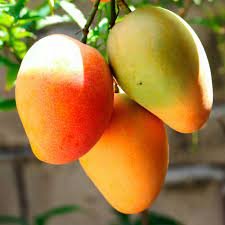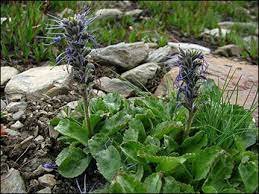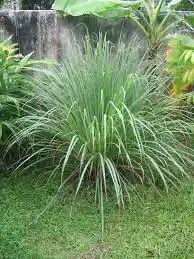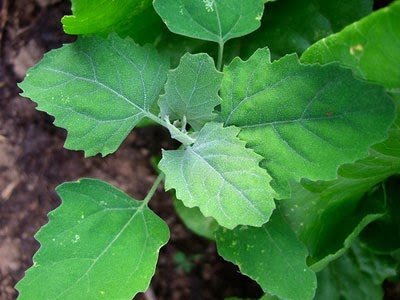Lychee (Litchi chinensis) Nutrition Requirements
Nutrition required by Lychee (Litchi chinensis) at each stage of its life cycle.
SOIL PREPARATION
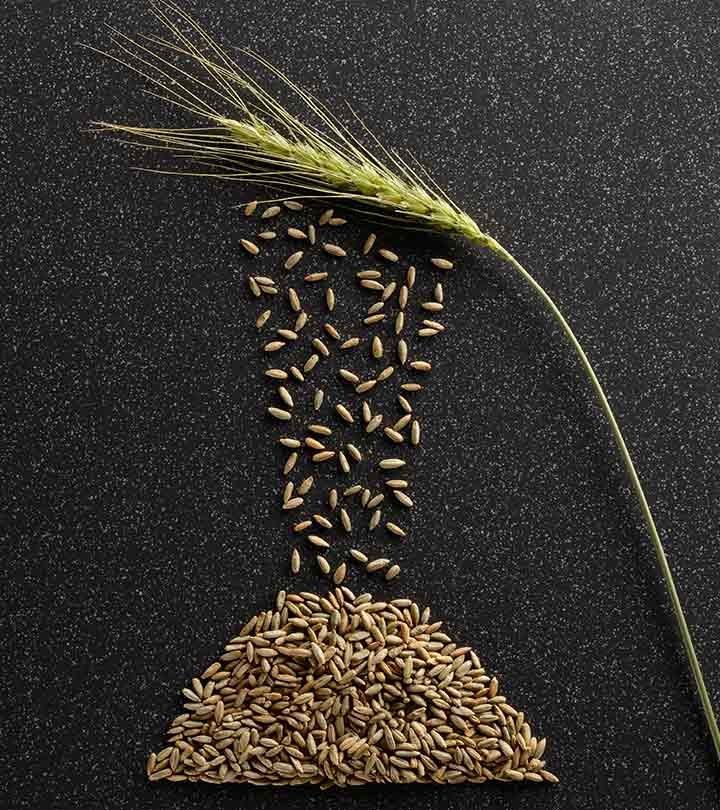
Soil Preparation
Soil preparation is crucial for establishing healthy litchi trees, as it ensures proper root development and nutrient availability.
Here's a guide to soil preparation and nutrition requirements at the soil preparation stage for litchi:
**Soil Preparation:**
1. **Site Selection:** Choose a well-drained site with deep, loamy soil and good air circulation. Litchi trees prefer slightly acidic to neutral soil (pH 6.0-7.5).
2. **Soil Testing:** Conduct a soil test to determine the pH and nutrient levels in the soil. Adjust soil pH if necessary using lime or sulfur according to the recommendations from the soil test.
3. **Land Preparation:** Clear the site of weeds, rocks, and debris. Prepare the land by plowing or tilling to a depth of at least 60 centimeters (24 inches) to loosen the soil and improve aeration and drainage.
4. **Soil Amendments:** Incorporate organic matter such as compost, well-rotted manure, or leaf litter into the soil to improve its structure, water retention, and nutrient content.
5. **Planting Holes:** Dig planting holes that are twice as wide and deep as the root ball of the litchi tree. Space the planting holes at least 10-12 meters (33-40 feet) apart to accommodate the tree's mature size.
6. **Planting:** Plant litchi trees at the same depth they were growing in the nursery. Backfill the planting holes with soil, pressing down gently to eliminate air pockets around the roots.
7. **Mulching:** Apply a layer of organic mulch, such as wood chips or straw, around the base of the litchi tree to conserve moisture, suppress weed growth, and regulate soil temperature.
8. **Irrigation:** Water the newly planted litchi trees thoroughly after planting to settle the soil around the roots. Provide regular irrigation as needed to keep the soil evenly moist but not waterlogged.
**Nutrition Requirements:**
1. **Nitrogen (N):** Litchi trees have moderate to high nitrogen requirements, especially during the early growth stages. Apply nitrogen fertilizer based on soil test recommendations and tree age, typically in split applications throughout the growing season.
2. **Phosphorus (P):** Phosphorus is important for root development and fruit production in litchi trees. Apply phosphorus-containing fertilizers such as superphosphate or bone meal at planting and during the growing season as needed.
3. **Potassium (K):** Potassium is essential for overall tree health, flower and fruit development, and disease resistance. Apply potassium-containing fertilizers such as potassium sulfate or potassium chloride according to soil test recommendations.
4. **Micronutrients:** Litchi trees may require micronutrient supplementation, especially if deficiencies are detected in soil tests. Apply micronutrient fertilizers or foliar sprays containing iron, manganese, zinc, copper, and boron as needed to correct deficiencies.
5. **pH Adjustment:** Monitor soil pH regularly and adjust it as needed to maintain it within the optimal range for litchi growth (pH 6.0-7.5). Lime can be added to raise pH, while sulfur can be used to lower pH.
6. **Organic Matter:** Incorporate organic matter into the soil during preparation and topdress with compost or well-rotted manure annually to improve soil fertility and structure.
By following these soil preparation and nutrition guidelines, you can establish healthy litchi trees with optimal growth and fruit production. Regular monitoring of soil fertility and plant health is essential to adjust nutrient management practices as needed throughout the growing season.
Early Growth (Germination to Establishment)

Early Growth
During the early growth stage (germination to establishment) of litchi trees, proper nutrition is essential to support healthy root and shoot development.
Here are the key nutrient requirements for litchi trees during this stage:
1. **Nitrogen (N):** Nitrogen is crucial for promoting vigorous vegetative growth, including the development of leaves and stems. Apply nitrogen fertilizer in moderate amounts during the early growth stage to support healthy shoot growth. However, excessive nitrogen can lead to excessive vegetative growth at the expense of fruiting, so it's important to avoid over-fertilization.
2. **Phosphorus (P):** Phosphorus is essential for root development and overall plant growth. Adequate phosphorus levels are crucial during the early growth stage to support the establishment of a healthy root system. Phosphorus-containing fertilizers, such as superphosphate or bone meal, can be applied at planting or incorporated into the soil during soil preparation.
3. **Potassium (K):** Potassium plays a key role in various physiological processes, including water and nutrient uptake, photosynthesis, and disease resistance. Adequate potassium levels are important during the early growth stage to support overall plant health and vigor. Potassium-containing fertilizers, such as potassium sulfate or potassium chloride, can be applied according to soil test recommendations.
4. **Calcium (Ca) and Magnesium (Mg):** Calcium and magnesium are essential secondary nutrients that contribute to cell wall structure and overall plant health. Adequate levels of calcium and magnesium are important for litchi trees during the early growth stage to support healthy growth and development. These nutrients can be provided through the application of lime (calcium carbonate) and dolomite lime (calcium magnesium carbonate) if deficiencies are detected in soil tests.
5. **Micronutrients:** Micronutrients, including iron (Fe), manganese (Mn), zinc (Zn), copper (Cu), and boron (B), are essential for various physiological processes in litchi trees. Adequate levels of micronutrients are important during the early growth stage to prevent deficiencies and support overall plant health. Micronutrient fertilizers or foliar sprays containing these elements can be applied as needed based on soil test recommendations or visual symptoms of deficiency.
6. **pH Adjustment:** Ensure that the soil pH is within the optimal range for litchi growth (pH 6.0-7.5) during the early growth stage. Adjust soil pH if necessary using lime to raise pH or sulfur to lower pH, based on soil test recommendations.
7. **Water and Irrigation:** Adequate water supply is crucial during the early growth stage to support seed germination, root establishment, and overall plant growth. Provide regular irrigation to keep the soil evenly moist but not waterlogged, especially during dry periods.
By providing the appropriate nutrients and ensuring optimal growing conditions during the early growth stage, you can support the healthy establishment of litchi trees and set the stage for successful growth and fruit production in the future. Regular monitoring of plant health and nutrient levels is important to adjust nutrient management practices as needed throughout the growing season.
Tillering Stage (Shoot Development)

Tillering Stage
During the tillering stage (shoot development) of litchi trees, proper nutrition is essential to support vigorous shoot growth and overall plant development.
Here are the key nutrient requirements for litchi trees during this stage:
1. **Nitrogen (N):** Nitrogen is crucial for promoting vegetative growth, including the development of shoots and leaves. Adequate nitrogen levels are important during the tillering stage to support vigorous shoot growth and canopy development. Apply nitrogen fertilizer in moderate amounts, taking into account soil test recommendations and the tree's growth stage.
2. **Phosphorus (P):** Phosphorus is essential for root development and overall plant growth. Adequate phosphorus levels are important during the tillering stage to support the development of a healthy root system and shoot growth. Phosphorus-containing fertilizers, such as superphosphate or bone meal, can be applied according to soil test recommendations.
3. **Potassium (K):** Potassium plays a key role in various physiological processes, including water and nutrient uptake, photosynthesis, and disease resistance. Adequate potassium levels are important during the tillering stage to support overall plant health and vigor. Potassium-containing fertilizers, such as potassium sulfate or potassium chloride, can be applied according to soil test recommendations.
4. **Calcium (Ca) and Magnesium (Mg):** Calcium and magnesium are essential secondary nutrients that contribute to cell wall structure and overall plant health. Adequate levels of calcium and magnesium are important during the tillering stage to support shoot development and overall plant growth. These nutrients can be provided through the application of lime (calcium carbonate) and dolomite lime (calcium magnesium carbonate) if deficiencies are detected in soil tests.
5. **Micronutrients:** Micronutrients, including iron (Fe), manganese (Mn), zinc (Zn), copper (Cu), and boron (B), are essential for various physiological processes in litchi trees. Adequate levels of micronutrients are important during the tillering stage to prevent deficiencies and support overall plant health. Micronutrient fertilizers or foliar sprays containing these elements can be applied as needed based on soil test recommendations or visual symptoms of deficiency.
6. **pH Adjustment:** Ensure that the soil pH is within the optimal range for litchi growth (pH 6.0-7.5) during the tillering stage. Adjust soil pH if necessary using lime to raise pH or sulfur to lower pH, based on soil test recommendations.
7. **Water and Irrigation:** Adequate water supply is crucial during the tillering stage to support vigorous shoot growth and overall plant development. Provide regular irrigation to keep the soil evenly moist but not waterlogged, especially during dry periods.
By providing the appropriate nutrients and ensuring optimal growing conditions during the tillering stage, you can support the healthy development of litchi shoots and set the stage for successful growth and fruit production in the future. Regular monitoring of plant health and nutrient levels is important to adjust nutrient management practices as needed throughout the growing season.
Flowering

Flowering
During the flowering stage of litchi trees, proper nutrition is crucial to support flower development, pollination, and fruit set.
Here are the key nutrient requirements for litchi trees during this stage:
1. **Potassium (K):** Potassium plays a crucial role in flower development, fruit set, and overall plant health. Adequate potassium levels are important during the flowering stage to support flower formation and pollination. Potassium-containing fertilizers, such as potassium sulfate or potassium chloride, can be applied according to soil test recommendations.
2. **Calcium (Ca) and Magnesium (Mg):** Calcium and magnesium are essential secondary nutrients that contribute to flower development and overall plant health. Adequate levels of calcium and magnesium are important during the flowering stage to support flower formation and pollination. These nutrients can be provided through the application of lime (calcium carbonate) and dolomite lime (calcium magnesium carbonate) if deficiencies are detected in soil tests.
3. **Boron (B):** Boron is a micronutrient that is essential for flower development, pollen germination, and fruit set. Adequate boron levels are important during the flowering stage to ensure successful pollination and fruit set. Boron-containing fertilizers or foliar sprays can be applied as needed based on soil test recommendations or visual symptoms of deficiency.
4. **Calcium Nitrate (Ca(NO3)2):** Calcium nitrate is a source of both calcium and nitrogen, which are important nutrients during the flowering stage. Calcium nitrate can be applied as a foliar spray to provide readily available calcium and nitrogen to support flower development and fruit set.
5. **Phosphorus (P):** Phosphorus is important for flower formation and overall plant growth. Adequate phosphorus levels are important during the flowering stage to support flower development and fruit set. Phosphorus-containing fertilizers, such as superphosphate or bone meal, can be applied according to soil test recommendations.
6. **Micronutrients:** Micronutrients, including iron (Fe), manganese (Mn), zinc (Zn), and copper (Cu), are essential for various physiological processes in litchi trees, including flower development and fruit set. Adequate levels of micronutrients are important during the flowering stage to prevent deficiencies and support overall plant health. Micronutrient fertilizers or foliar sprays containing these elements can be applied as needed based on soil test recommendations or visual symptoms of deficiency.
7. **pH Adjustment:** Ensure that the soil pH is within the optimal range for litchi growth (pH 6.0-7.5) during the flowering stage. Adjust soil pH if necessary using lime to raise pH or sulfur to lower pH, based on soil test recommendations.
By providing the appropriate nutrients and ensuring optimal growing conditions during the flowering stage, you can support successful flower development, pollination, and fruit set in litchi trees. Regular monitoring of plant health and nutrient levels is important to adjust nutrient management practices as needed throughout the growing season.
Matchuration & Ripening

Matchuration & Ripening
During the maturation and ripening stage of litchi fruit, proper nutrition is essential to support fruit development, flavor, and quality.
Here are the key nutrient requirements for litchi trees during this stage:
1. **Potassium (K):** Potassium plays a crucial role in fruit development, maturation, and overall fruit quality. Adequate potassium levels are important during the maturation and ripening stage to support fruit enlargement, sugar accumulation, and flavor development. Potassium-containing fertilizers, such as potassium sulfate or potassium chloride, can be applied according to soil test recommendations.
2. **Calcium (Ca):** Calcium is essential for cell wall development and fruit firmness. Adequate calcium levels are important during the maturation and ripening stage to prevent disorders such as bitter pit and maintain fruit quality. Calcium-containing fertilizers, such as calcium nitrate or calcium chloride, can be applied according to soil test recommendations.
3. **Boron (B):** Boron is a micronutrient that is essential for fruit development, sugar metabolism, and flavor formation. Adequate boron levels are important during the maturation and ripening stage to support fruit enlargement and sugar accumulation. Boron-containing fertilizers or foliar sprays can be applied as needed based on soil test recommendations or visual symptoms of deficiency.
4. **Phosphorus (P):** Phosphorus is important for fruit development and energy transfer within the plant. Adequate phosphorus levels are important during the maturation and ripening stage to support fruit enlargement and maturation. Phosphorus-containing fertilizers, such as superphosphate or bone meal, can be applied according to soil test recommendations.
5. **Magnesium (Mg):** Magnesium is essential for chlorophyll formation and photosynthesis, which are important for fruit development and quality. Adequate magnesium levels are important during the maturation and ripening stage to support fruit maturation and color development. Magnesium-containing fertilizers, such as magnesium sulfate or dolomite lime, can be applied according to soil test recommendations.
6. **Micronutrients:** Micronutrients, including iron (Fe), manganese (Mn), zinc (Zn), and copper (Cu), are essential for various physiological processes in litchi trees, including fruit development and quality. Adequate levels of micronutrients are important during the maturation and ripening stage to prevent deficiencies and support overall fruit quality. Micronutrient fertilizers or foliar sprays containing these elements can be applied as needed based on soil test recommendations or visual symptoms of deficiency.
7. **pH Adjustment:** Ensure that the soil pH is within the optimal range for litchi growth (pH 6.0-7.5) during the maturation and ripening stage. Adjust soil pH if necessary using lime to raise pH or sulfur to lower pH, based on soil test recommendations.
By providing the appropriate nutrients and ensuring optimal growing conditions during the maturation and ripening stage, you can support the development of high-quality litchi fruit with good flavor, texture, and storability. Regular monitoring of plant health and nutrient levels is important to adjust nutrient management practices as needed throughout the growing season.
Harvesting

Harvesting
During the harvesting stage of litchi fruits, proper nutrition management and post-harvest procedures are essential to ensure optimal fruit quality, flavor, and storability.
Here are the key aspects of nutrition requirements and procedures to follow during the harvesting stage for litchi:
**Nutrition Requirements:**
1. **Potassium (K):** Adequate potassium levels are important during the harvesting stage to support fruit quality, sweetness, and shelf life. Potassium helps regulate water movement within the fruit and influences sugar accumulation. Ensure that potassium levels are sufficient in the soil through proper fertilization practices.
2. **Calcium (Ca):** Calcium plays a crucial role in maintaining fruit firmness and preventing post-harvest disorders such as bitter pit. Adequate calcium levels are essential during the harvesting stage to enhance fruit quality and reduce storage losses. Apply calcium-containing fertilizers or foliar sprays as needed to address calcium deficiencies.
3. **Boron (B):** Boron is important for fruit development and sugar metabolism. Adequate boron levels are crucial during the harvesting stage to support fruit quality, sugar content, and storability. Apply boron-containing fertilizers or foliar sprays if boron deficiencies are detected in soil tests or through visual symptoms.
4. **Post-Harvest Nutrient Application:** After harvesting litchi fruits, consider applying foliar sprays containing essential nutrients such as potassium, calcium, and boron to enhance fruit quality, shelf life, and storability. These foliar sprays can help replenish nutrients lost during fruit development and harvesting.
**Procedure:**
1. **Harvest Timing:** Harvest litchi fruits when they reach the desired maturity stage, typically indicated by a vibrant red color and a slight softening of the fruit. Avoid harvesting fruits prematurely, as they may lack sweetness and flavor, while overripe fruits may be prone to bruising and spoilage.
2. **Harvesting Technique:** Use proper harvesting techniques to minimize fruit damage and maintain fruit quality. Cut the fruit stalk with sharp, sanitized pruning shears, leaving a short stem attached to the fruit. Handle harvested fruits carefully to avoid bruising or puncturing the delicate skin.
3. **Post-Harvest Handling:** After harvesting, promptly remove any damaged or diseased fruits to prevent the spread of pathogens and reduce post-harvest losses. Handle litchi fruits gently to avoid bruising or mechanical damage. Store harvested fruits in well-ventilated containers or crates to maintain freshness and reduce the risk of spoilage.
4. **Storage Conditions:** Store harvested litchi fruits in a cool, humid environment to extend shelf life and maintain fruit quality. Avoid exposure to direct sunlight and extreme temperatures, as this can accelerate fruit deterioration. Consider using refrigeration or controlled atmosphere storage to prolong shelf life.
5. **Nutrient Management:** Consider applying foliar sprays containing essential nutrients such as potassium, calcium, and boron immediately after harvesting to enhance fruit quality, flavor, and storability. Follow manufacturer recommendations for application rates and timing.
By following these nutrition requirements and procedures during the harvesting stage, you can ensure the production of high-quality litchi fruits with excellent flavor, texture, and shelf life. Regular monitoring of fruit quality and post-harvest handling practices is essential to minimize losses and maximize market value.
Lychee (Litchi chinensis) Farming Economics
Get details of Profitability and cost estimate in growing Lychee (Litchi chinensis) per acres of Land.
SOIL PREPARATION
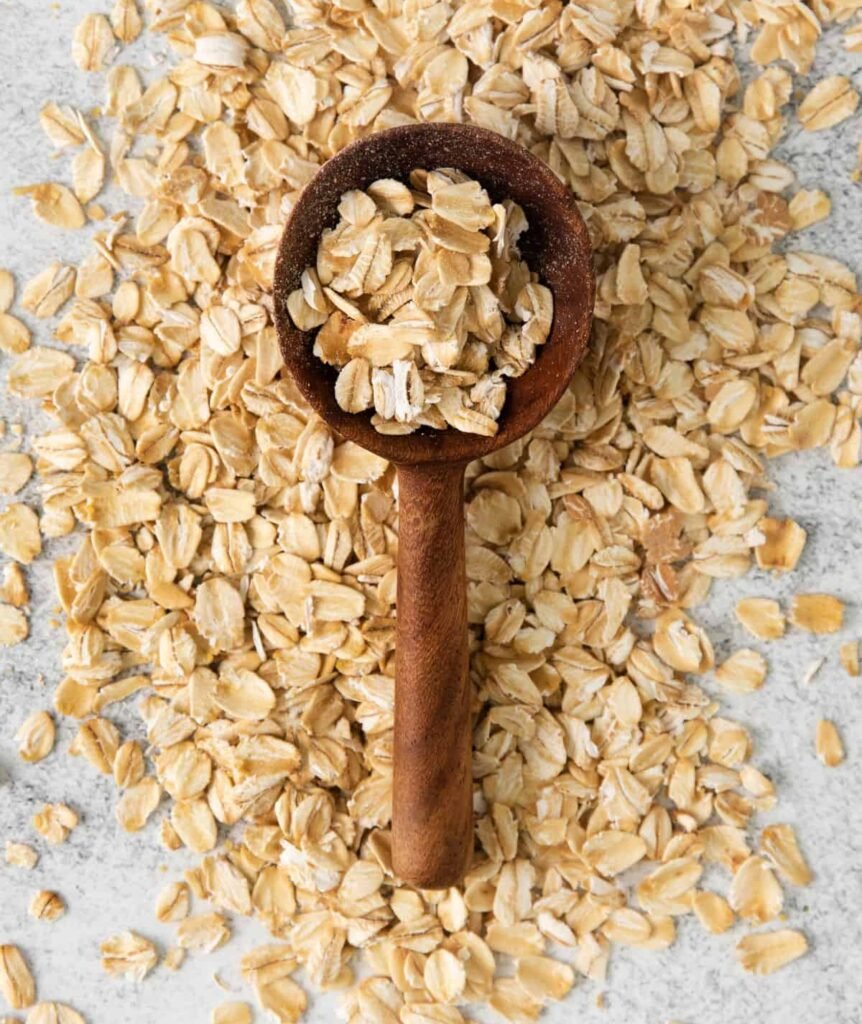
Soil Preparation
Early Growth (Germination to Establishment)

Early Growth
Tillering Stage (Shoot Development)

Tillering Stage
Flowering

Flowering
Matchuration & Ripening

Matchuration & Ripening
Harvesting

Harvesting
Lychee (Litchi chinensis) Disease Details
Nutrition required by Lychee (Litchi chinensis) at each stage of its life cycle.
SOIL PREPARATION

Soil Preparation
During the soil preparation stage for litchi cultivation, several diseases and pests can affect the health of the trees and subsequent fruit production.
Here are some common diseases and pests that can occur during this stage, along with precautions to prevent their occurrence:
**Diseases:**
1. **Phytophthora Root Rot:** This soilborne fungal disease can infect litchi trees, causing root rot and ultimately leading to tree decline. It thrives in poorly drained soils with excessive moisture. To prevent Phytophthora root rot:
- Ensure proper soil drainage by selecting well-drained sites for planting litchi trees.
- Avoid overwatering and improve soil drainage through proper land preparation techniques.
- Plant litchi trees in raised beds or mounds to improve soil drainage around the root zone.
2. **Fusarium Wilt:** Fusarium wilt is caused by the soilborne fungus Fusarium spp. It infects the vascular system of litchi trees, leading to wilting, yellowing of leaves, and ultimately tree death. To prevent Fusarium wilt:
- Plant disease-resistant litchi cultivars whenever possible.
- Practice crop rotation and avoid planting litchi trees in soil where Fusarium-infected plants have previously been grown.
- Ensure proper soil drainage and avoid waterlogging.
**Pests:**
1. **Root Knot Nematodes:** These microscopic roundworms can infect the roots of litchi trees, causing swelling and galling, which impairs root function and nutrient uptake. To prevent root knot nematode infestation:
- Use nematode-resistant rootstocks when available.
- Practice crop rotation with non-host crops to reduce nematode populations in the soil.
- Ensure proper soil drainage and avoid waterlogging, as nematodes thrive in wet conditions.
2. **Termites:** Termites can infest the soil and damage the roots of litchi trees, leading to stunted growth and decline. To prevent termite infestation:
- Implement termite management practices such as the use of physical barriers (e.g., metal mesh) during soil preparation to prevent termite entry into the root zone.
- Use termite-resistant construction materials for raised beds or mounds where litchi trees are planted.
- Regularly inspect litchi trees for signs of termite activity and take prompt action if infestation is detected.
**Precautionary Measures:**
- Conduct soil tests to assess soil health and identify any nutrient deficiencies or pH imbalances that may predispose litchi trees to diseases.
- Practice proper sanitation by removing plant debris and weeds from the planting area to reduce the risk of disease carryover.
- Use disease-free planting material from reputable sources to avoid introducing pathogens into the soil.
- Monitor litchi trees regularly for signs of disease or pest infestation and take appropriate measures, such as applying fungicides or insecticides, if necessary.
By implementing these precautions and preventive measures during the soil preparation stage, you can minimize the risk of diseases and pests affecting litchi trees and promote healthy tree establishment and fruit production.
Early Growth (Germination to Establishment)

Early Growth
During the early growth stage of litchi trees, several diseases and pests can affect the health of the young plants and potentially impact their establishment.
Here are some common diseases and pests that can occur during this stage, along with precautions to prevent their occurrence:
**Diseases:**
1. **Damping-off:** Damping-off is a fungal disease that affects seeds and seedlings, causing them to rot at the soil line. It is often caused by soilborne fungi such as Pythium spp. and Rhizoctonia spp. To prevent damping-off:
- Use well-drained, sterile growing media for seed germination and seedling establishment.
- Avoid overwatering and ensure proper soil drainage to reduce moisture levels, as excessive moisture promotes fungal growth.
- Practice proper sanitation by removing plant debris and sterilizing equipment to prevent the spread of fungal pathogens.
2. **Anthracnose:** Anthracnose is a fungal disease that can affect litchi leaves, shoots, and young fruit, causing dark lesions and fruit rot. It is caused by Colletotrichum spp. To prevent anthracnose:
- Plant disease-resistant litchi cultivars whenever possible.
- Practice proper spacing between plants to promote air circulation and reduce humidity levels, which can inhibit fungal growth.
- Apply fungicides preventively according to label instructions if anthracnose is a known problem in the area.
**Pests:**
1. **Aphids:** Aphids are sap-sucking insects that can feed on litchi leaves and young shoots, causing leaf distortion and stunting. They can also transmit viral diseases. To prevent aphid infestation:
- Monitor litchi trees regularly for signs of aphid activity, such as curled leaves or the presence of honeydew.
- Use natural predators, such as ladybugs or lacewings, to control aphid populations.
- Apply insecticidal soaps or horticultural oils as a natural control method if aphid populations become problematic.
2. **Leafhoppers:** Leafhoppers are small, wedge-shaped insects that feed on litchi leaves and can transmit viral diseases. To prevent leafhopper infestation:
- Maintain weed-free surroundings to reduce leafhopper habitat and breeding sites.
- Monitor litchi trees regularly for signs of leafhopper feeding damage, such as stippling or yellowing of leaves.
- Apply insecticides as necessary to control leafhopper populations, following label instructions and considering their impact on beneficial insects.
**Precautionary Measures:**
- Use disease-free planting material from reputable sources to avoid introducing pathogens into the planting area.
- Provide proper cultural care, including adequate irrigation, fertilization, and weed control, to promote healthy plant growth and vigor.
- Implement integrated pest management (IPM) practices, including monitoring pest populations, utilizing biological control agents, and employing selective pesticides only when necessary to minimize environmental impact.
By implementing these precautions and preventive measures during the early growth stage of litchi trees, you can help mitigate the risk of diseases and pests affecting young plants and support their establishment and healthy growth. Regular monitoring and prompt action in response to any signs of disease or pest infestation are essential for successful litchi cultivation.
Tillering Stage (Shoot Development)

Tillering Stage
During the tillering stage (shoot development) of litchi trees, several diseases and pests can affect the health of the plants and potentially impact shoot growth and development.
Here are some common diseases and pests that can occur during this stage, along with precautions to prevent their occurrence:
**Diseases:**
1. **Powdery Mildew:** Powdery mildew is a fungal disease that affects litchi leaves, shoots, and young fruit, causing a powdery white coating on the plant surface. It is caused by various species of the genus Podosphaera. To prevent powdery mildew:
- Maintain proper spacing between litchi trees to promote air circulation and reduce humidity levels, which can inhibit fungal growth.
- Avoid overhead irrigation, as wet foliage can promote powdery mildew development.
- Apply fungicides preventively according to label instructions if powdery mildew is a known problem in the area.
2. **Dieback:** Dieback is a condition characterized by the progressive death of shoots and branches, often caused by fungal pathogens such as Botryosphaeria dothidea and Colletotrichum gloeosporioides. To prevent dieback:
- Prune litchi trees regularly to remove dead or diseased wood and improve air circulation within the canopy.
- Avoid over-fertilization with nitrogen, as excessive nitrogen can promote lush, succulent growth that is more susceptible to fungal infections.
- Apply fungicides preventively according to label instructions if dieback is a known problem in the area.
**Pests:**
1. **Litchi Stink Bug:** Litchi stink bugs (Tessaratoma papillosa) are sap-sucking insects that feed on litchi shoots and fruit, causing damage and distortion. To prevent litchi stink bug infestation:
- Monitor litchi trees regularly for signs of stink bug activity, such as feeding damage or the presence of adults or nymphs.
- Use insecticidal soaps or horticultural oils as a natural control method if stink bug populations become problematic.
- Apply insecticides as necessary to control stink bug populations, following label instructions and considering their impact on beneficial insects.
2. **Leafhoppers:** Leafhoppers are small, wedge-shaped insects that feed on litchi leaves and can transmit viral diseases. To prevent leafhopper infestation:
- Maintain weed-free surroundings to reduce leafhopper habitat and breeding sites.
- Monitor litchi trees regularly for signs of leafhopper feeding damage, such as stippling or yellowing of leaves.
- Apply insecticides as necessary to control leafhopper populations, following label instructions and considering their impact on beneficial insects.
**Precautionary Measures:**
- Practice proper sanitation by removing plant debris and pruning tools to prevent the spread of fungal pathogens.
- Provide proper cultural care, including adequate irrigation, fertilization, and weed control, to promote healthy plant growth and vigor.
- Implement integrated pest management (IPM) practices, including monitoring pest populations, utilizing biological control agents, and employing selective pesticides only when necessary to minimize environmental impact.
By implementing these precautions and preventive measures during the tillering stage of litchi trees, you can help mitigate the risk of diseases and pests affecting shoot development and support the healthy growth of the plants. Regular monitoring and prompt action in response to any signs of disease or pest infestation are essential for successful litchi cultivation.
Flowering

Flowering
During the flowering stage of litchi trees, several diseases and pests can affect the health of the flowers and potentially impact fruit set and yield.
Here are some common diseases and pests that can occur during this stage, along with precautions to prevent their occurrence:
**Diseases:**
1. **Flower Blight:** Flower blight is a fungal disease that affects litchi flowers, causing browning, wilting, and necrosis of flower parts. It is commonly caused by fungal pathogens such as Colletotrichum spp. and Botrytis cinerea. To prevent flower blight:
- Practice proper sanitation by removing and disposing of infected flowers and plant debris to prevent the spread of fungal spores.
- Ensure proper spacing between litchi trees to promote air circulation and reduce humidity levels, which can inhibit fungal growth.
- Apply fungicides preventively according to label instructions if flower blight is a known problem in the area.
2. **Anthracnose:** Anthracnose can also affect litchi flowers, causing dark lesions and flower rot. It is caused by Colletotrichum spp. To prevent anthracnose:
- Apply fungicides preventively according to label instructions if anthracnose is a known problem in the area.
- Maintain proper spacing between litchi trees to promote air circulation and reduce humidity levels, which can inhibit fungal growth.
**Pests:**
1. **Flower Thrips:** Flower thrips are small, slender insects that feed on litchi flowers, causing distortion and damage. They can also transmit viral diseases. To prevent flower thrips infestation:
- Monitor litchi trees regularly for signs of thrips activity, such as distorted flowers or the presence of adults or nymphs.
- Use insecticidal soaps or horticultural oils as a natural control method if thrips populations become problematic.
- Apply insecticides as necessary to control thrips populations, following label instructions and considering their impact on beneficial insects.
2. **Fruit Flies:** Fruit flies can infest litchi flowers and lay eggs, leading to fruit damage and infestation. To prevent fruit fly infestation:
- Monitor litchi trees regularly for signs of fruit fly activity, such as oviposition scars or the presence of adult flies.
- Use traps and baits to monitor and control fruit fly populations.
- Harvest litchi fruit promptly to minimize the risk of fruit fly infestation.
**Precautionary Measures:**
- Provide proper cultural care, including adequate irrigation, fertilization, and weed control, to promote healthy plant growth and vigor, which can help plants withstand disease and pest pressure.
- Implement integrated pest management (IPM) practices, including monitoring pest populations, utilizing biological control agents, and employing selective pesticides only when necessary to minimize environmental impact.
By implementing these precautions and preventive measures during the flowering stage of litchi trees, you can help mitigate the risk of diseases and pests affecting flower development and support successful fruit set and yield. Regular monitoring and prompt action in response to any signs of disease or pest infestation are essential for successful litchi cultivation.
Matchuration & Ripening

Matchuration & Ripening
During the maturation and ripening stage of litchi fruit, several diseases and pests can affect fruit quality and yield.
Here are some common diseases and pests that can occur during this stage, along with precautions to prevent their occurrence:
**Diseases:**
1. **Litchi Downy Blight:** Litchi downy blight, caused by the fungus Peronophythora litchii, can affect litchi fruit during the maturation and ripening stage. Symptoms include water-soaked lesions on the fruit surface, which later develop into brown to black spots with a downy growth. To prevent litchi downy blight:
- Maintain proper orchard sanitation by removing and disposing of infected fruit and plant debris.
- Apply fungicides preventively according to label instructions, especially during periods of high humidity and rainfall.
- Ensure good air circulation within the canopy by proper pruning and spacing of trees to reduce humidity levels, which can inhibit fungal growth.
2. **Postharvest Rot:** Postharvest rot can occur during the ripening and storage of litchi fruit, caused by various fungal pathogens such as Colletotrichum spp. and Botrytis cinerea. Symptoms include softening, discoloration, and mold growth on the fruit surface. To prevent postharvest rot:
- Harvest litchi fruit at the proper stage of maturity and handle them gently to minimize bruising and damage.
- Store harvested fruit in a cool, dry environment with good air circulation to reduce the risk of fungal growth.
- Treat harvested fruit with postharvest fungicides or sanitizing agents as recommended to control fungal pathogens and extend shelf life.
**Pests:**
1. **Fruit Flies:** Fruit flies can infest litchi fruit during the maturation and ripening stage, leading to fruit damage and infestation. To prevent fruit fly infestation:
- Harvest litchi fruit promptly at the proper stage of maturity to minimize the risk of fruit fly infestation.
- Use traps and baits to monitor and control fruit fly populations in the orchard.
- Store harvested fruit in sealed containers or bags to protect them from fruit fly infestation during transportation and storage.
2. **Birds:** Birds such as crows and fruit bats can feed on ripe litchi fruit, causing damage and reducing yield. To prevent bird damage:
- Use bird netting or other physical barriers to protect litchi trees and fruit from bird predation.
- Install scare devices or visual deterrents to deter birds from entering the orchard.
**Precautionary Measures:**
- Implement integrated pest management (IPM) practices, including monitoring pest populations, utilizing biological control agents, and employing selective pesticides only when necessary to minimize environmental impact.
- Harvest litchi fruit at the proper stage of maturity and handle them gently to minimize physical damage and susceptibility to diseases and pests.
- Maintain proper orchard sanitation and hygiene practices to reduce the risk of disease spread and pest infestation.
By implementing these precautions and preventive measures during the maturation and ripening stage of litchi fruit, you can help mitigate the risk of diseases and pests affecting fruit quality and yield, and ensure a successful harvest. Regular monitoring and prompt action in response to any signs of disease or pest infestation are essential for successful litchi cultivation.
Harvesting

Harvesting
During the harvesting stage of litchi fruit, several diseases and pests can affect fruit quality and storability.
Here are some common diseases and pests that can occur during this stage, along with precautions to prevent their occurrence:
**Diseases:**
1. **Postharvest Rot:** Postharvest rot can occur during the harvesting and storage of litchi fruit, caused by various fungal pathogens such as Colletotrichum spp. and Botrytis cinerea. Symptoms include softening, discoloration, and mold growth on the fruit surface. To prevent postharvest rot:
- Harvest litchi fruit at the proper stage of maturity and handle them gently to minimize bruising and damage.
- Remove and discard any fruit showing signs of rot or decay to prevent the spread of fungal pathogens.
- Store harvested fruit in a cool, dry environment with good air circulation to reduce the risk of fungal growth.
**Pests:**
1. **Fruit Flies:** Fruit flies can infest litchi fruit during the harvesting and postharvest stages, leading to fruit damage and infestation. To prevent fruit fly infestation:
- Harvest litchi fruit promptly at the proper stage of maturity to minimize the risk of fruit fly infestation.
- Use traps and baits to monitor and control fruit fly populations in the orchard.
- Store harvested fruit in sealed containers or bags to protect them from fruit fly infestation during transportation and storage.
2. **Birds:** Birds such as crows and fruit bats can feed on ripe litchi fruit during the harvesting stage, causing damage and reducing yield. To prevent bird damage:
- Use bird netting or other physical barriers to protect litchi trees and fruit from bird predation.
- Harvest fruit promptly and remove any damaged or overripe fruit from the orchard to minimize bird attraction.
**Precautionary Measures:**
- Implement integrated pest management (IPM) practices, including monitoring pest populations, utilizing biological control agents, and employing selective pesticides only when necessary to minimize environmental impact.
- Harvest litchi fruit at the proper stage of maturity and handle them gently to minimize physical damage and susceptibility to diseases and pests.
- Maintain proper orchard sanitation and hygiene practices to reduce the risk of disease spread and pest infestation.
By implementing these precautions and preventive measures during the harvesting stage of litchi fruit, you can help mitigate the risk of diseases and pests affecting fruit quality and storability, and ensure a successful harvest. Regular monitoring and prompt action in response to any signs of disease or pest infestation are essential for successful litchi cultivation.





